Chapters
Introduction
Visual inspection after application of acetic acid (VIA)
Determining eligibility for ablative treatment after application of acetic acid
Anatomical considerations
Cervical epithelium
Physiological changes of cervical epithelium
Neoplastic changes of the cervical epithelium
Changes in the cervical epithelium after application of acetic acid
Instruments, consumables, and setup required for examination after application of acetic acid
VIA procedure
Interpretation of VIA test results
Preventing errors in VIA
Management of women with an abnormal VIA test
Steps to determine eligibility for ablative treatment
Role of Lugolís iodine in identifying the transformation zone for treatment
Treatment by cryotherapy
Treatment by thermal ablation
Videos
Preparation of Monselís solution
Infection prevention
Case study
Quiz
Acknowledgement
Suggested citation
Copyright
Home / Training / Manuals / Atlas of visual inspection of the cervix with acetic acid for screening, triage, and assessment for treatment
.png)
Click on the pictures to magnify and display the legends
Atlas of visual inspection of the cervix with acetic acid for screening, triage, and assessment for treatment
Filter by language: English / FranÁais / EspaŮol / Русский / українськаVIA procedure Ė Examination before application of acetic acid Ė Abnormal findings on speculum examination Ė Cervicovaginal inflammation |
Infective conditions of the cervix and the vagina are associated with excessive abnormal discharge that can be seen on opening the speculum blades. The characteristics of the discharge (colour, odour, consistency, and quantity) help in detecting the nature of the infection.
Sometimes pus may be seen coming out through the external os. If purulent discharge is seen at the external os, it is indicative of gonococcal infection (caused by the bacteria Neisseria gonorrhoeae) or chlamydial infection (caused by Chlamydia trachomatis). Examination of the urethra may also reveal purulent discharge. The cervix may appear congested and oedematous as a result of any lower genital tract infection. In trichomoniasis (caused by Trichomonas vaginalis), small red patches are often visible on the ectocervix, giving rise to a strawberry appearance of the cervix. An infected cervix may bleed on contact during the VIA procedure. Severe infection or inflammation of the cervix may lead to desquamation (superficial peeling off) of the surface epithelium, which on naked-eye examination may appear as red patches on the cervix. The peeling of the epithelium is known as erosion. The raw area on the cervix may bleed on contact. Click here to download a table of syndromic management of cervicovaginal infections. |
Click on the pictures to magnify and display the legends
IARC, 150 Cours Albert Thomas, 69372 Lyon CEDEX 08, France - Tel: +33 (0)4 72 73 84 85 - Fax: +33 (0)4 72 73 85 75
© IARC 2025 - All Rights Reserved.
© IARC 2025 - All Rights Reserved.




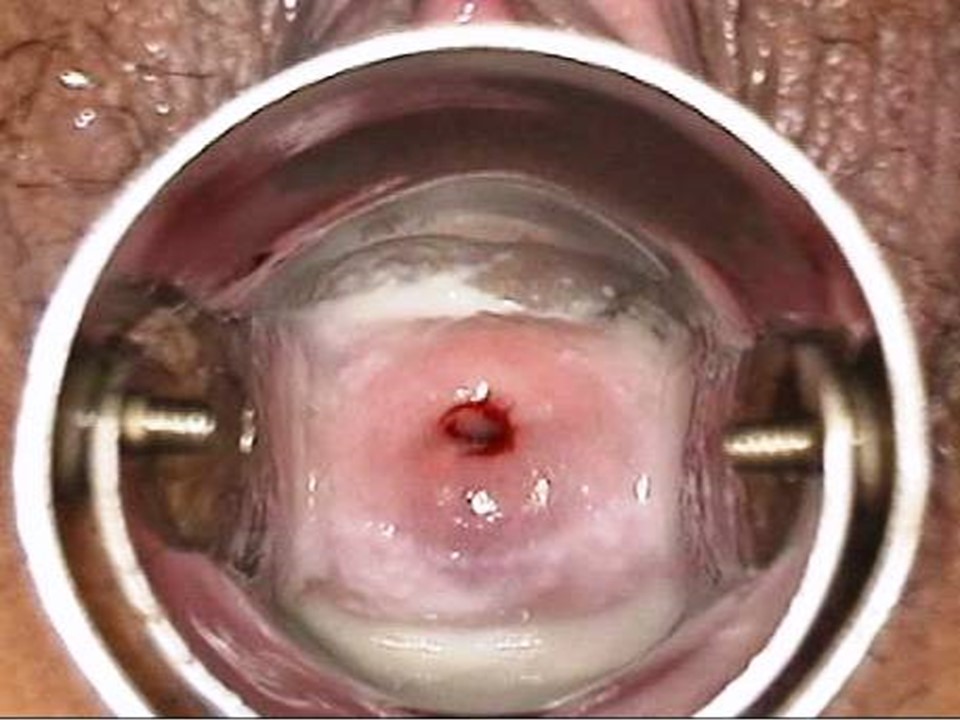
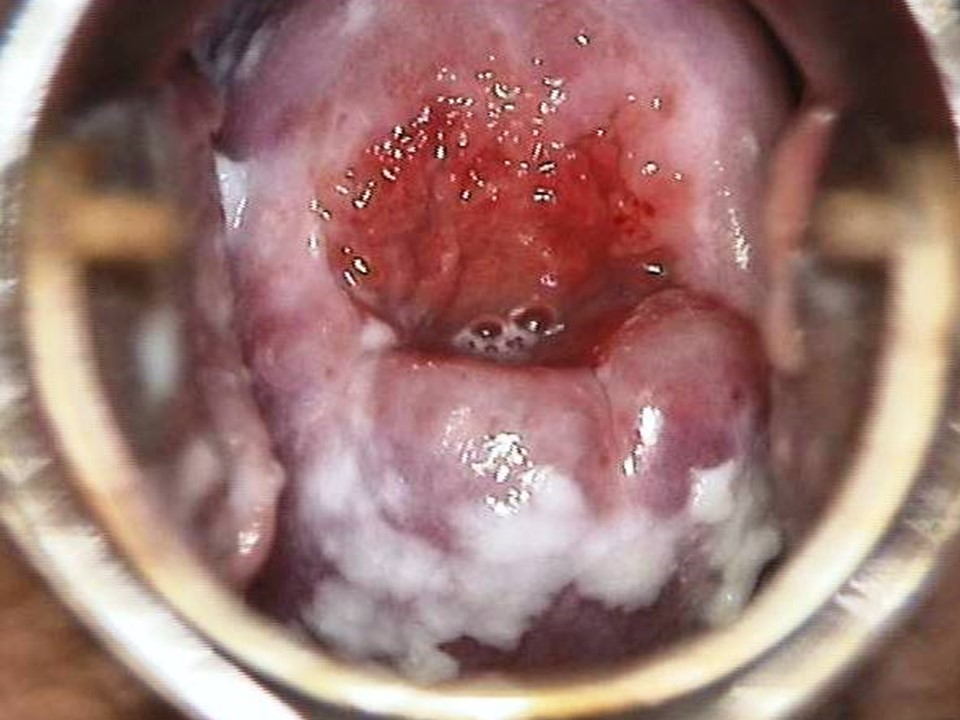
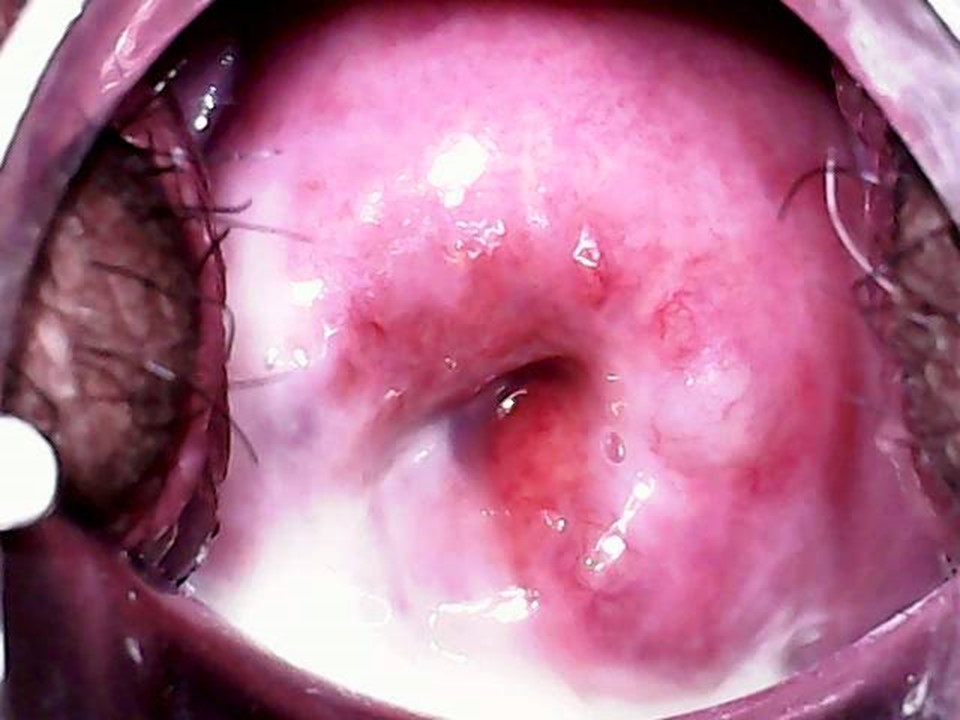
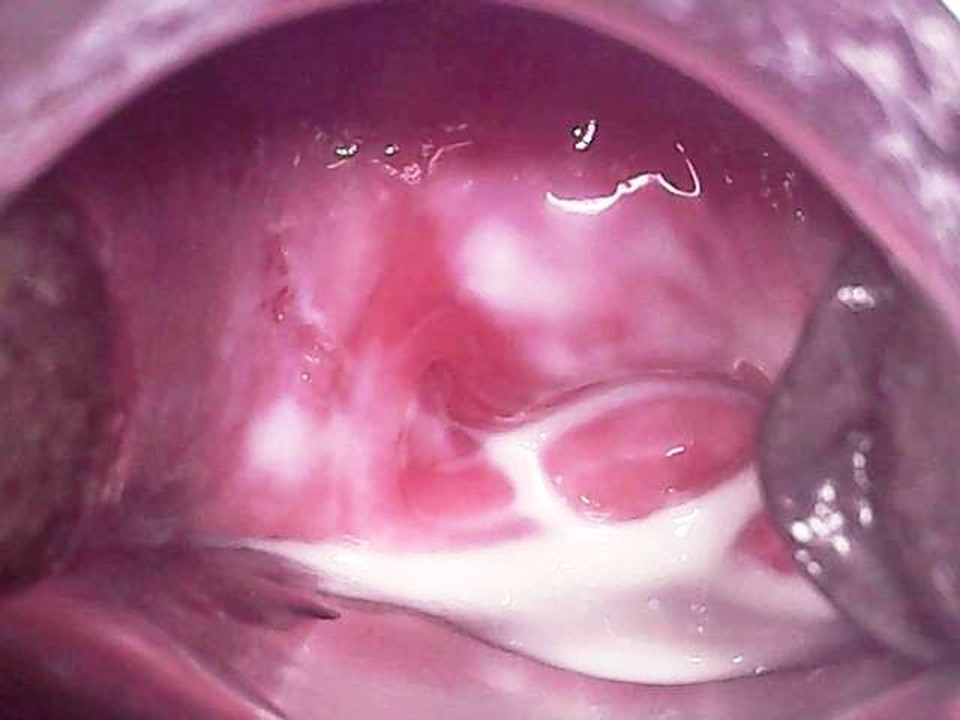
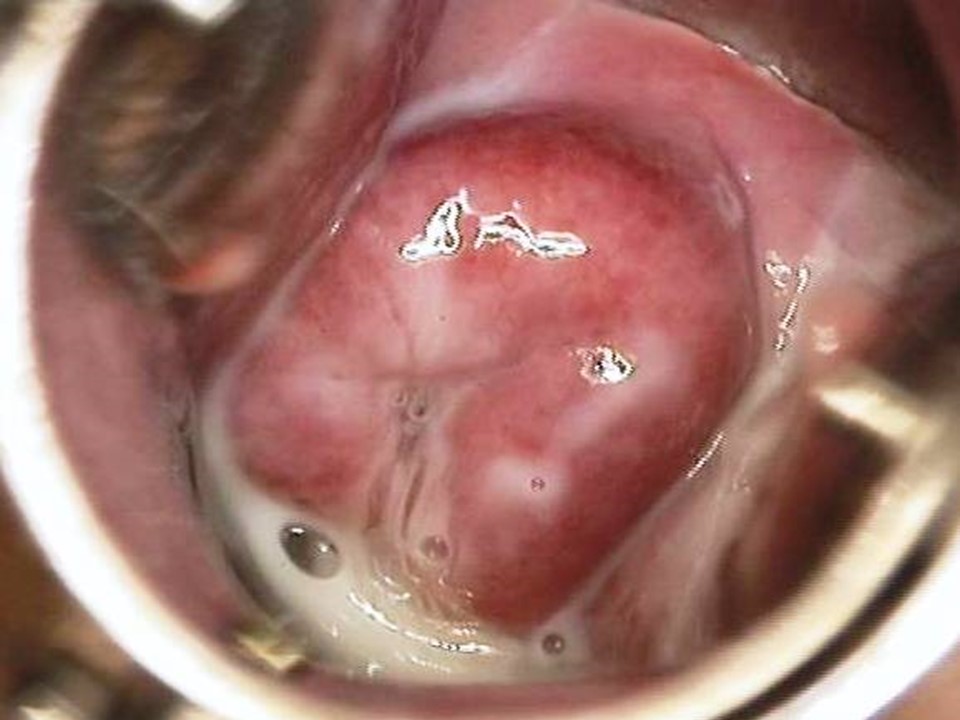
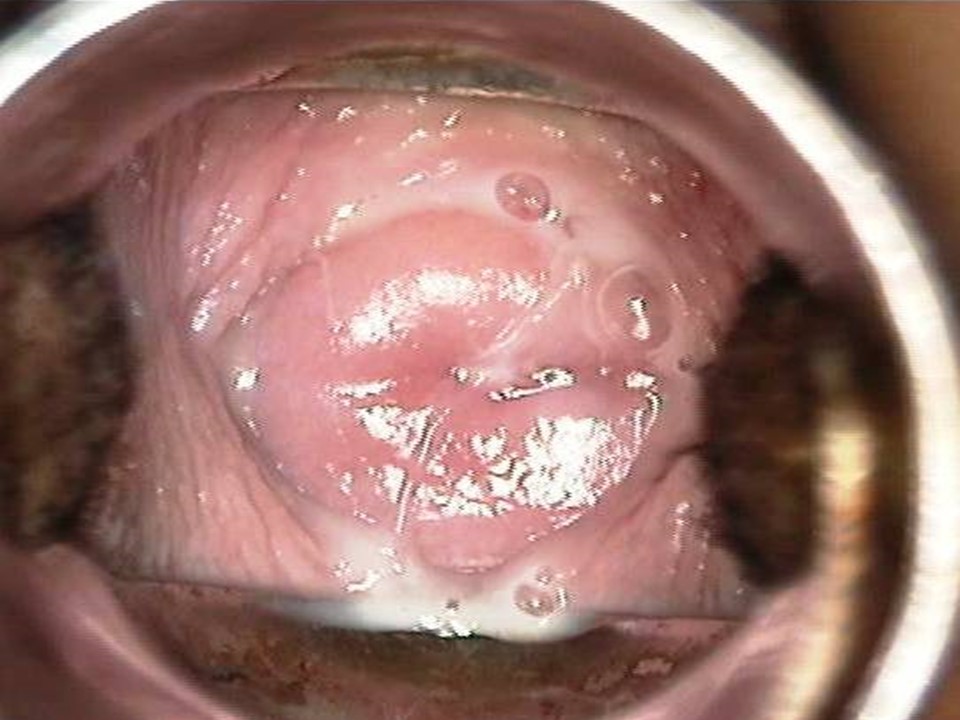
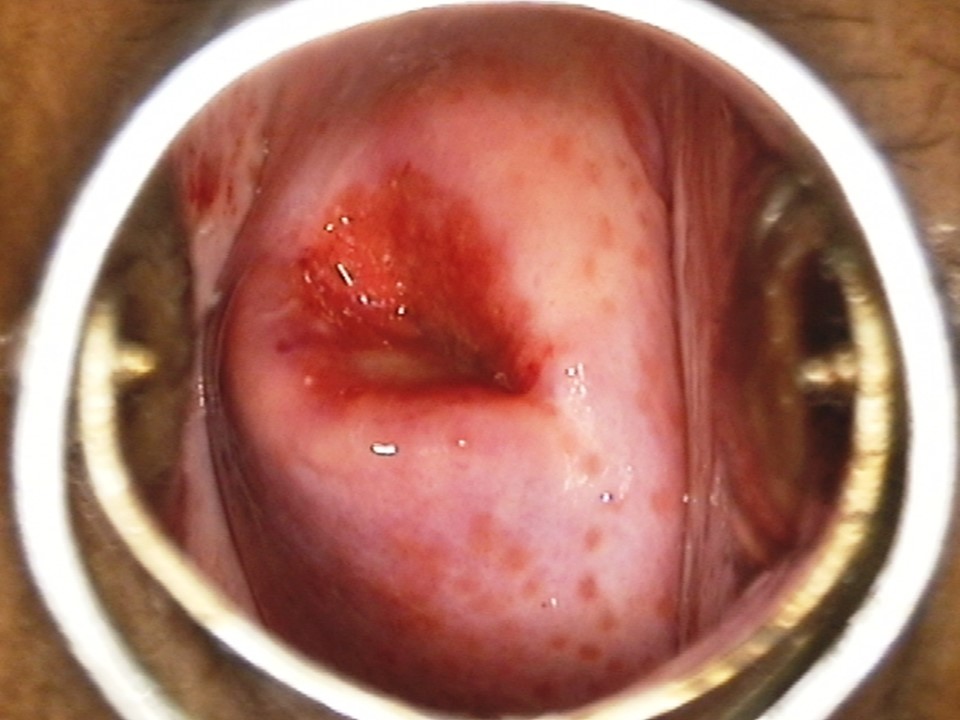
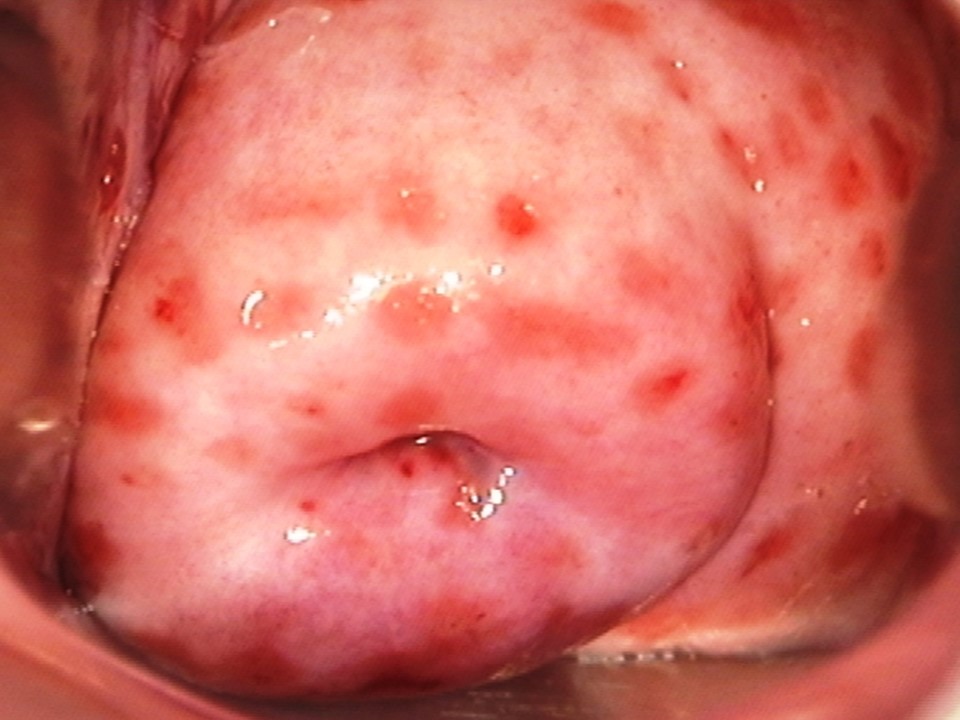
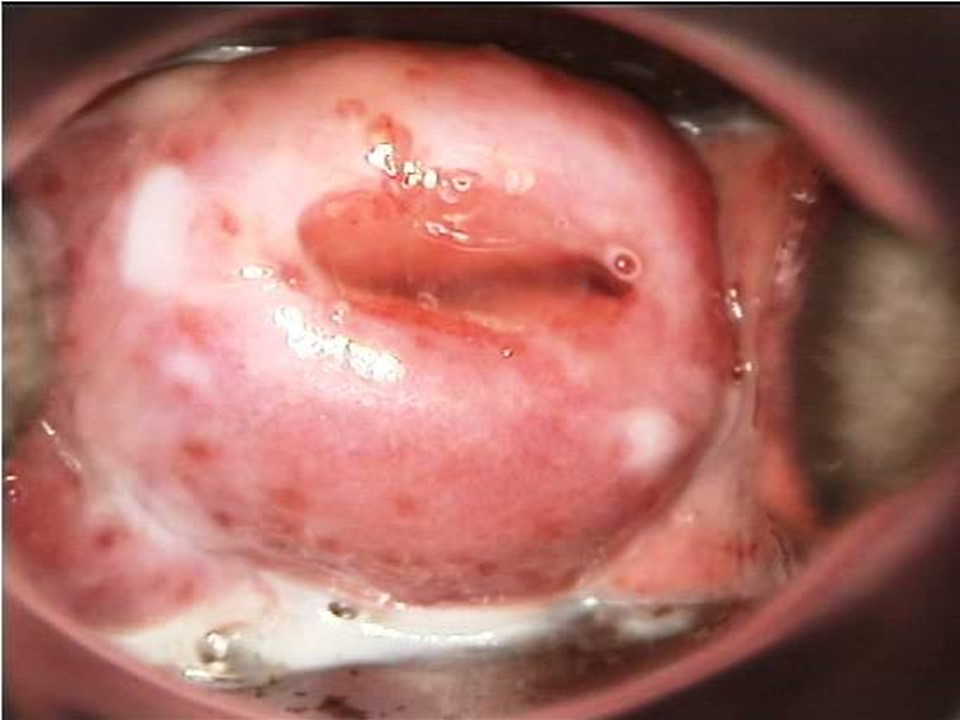
 Eroded area.jpg)
 Eroded area.jpg)
